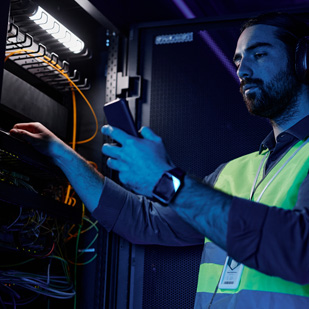The technology behind autonomous vehicles is a symphony of sensors, actuators and artificial intelligence (AI). These systems work in concert to tell a car where it is, where it’s going and what’s standing in its way.
Currently, truly autonomous vehicles are limited to small testing grounds near Silicon Valley, Tokyo and other states governed by lawmakers who understand the risks and rewards of this emerging technology. Outside of those locales, self-driving tech is limited to driver assistance like adaptive cruise control, auto lane changing, parking assist and limited hands-free self-steering.
But make no mistake, self-driving cars will one day take over the highways and bi-ways of every nation. It’s just a matter of time.
The nuts and bolts of self-driving cars
The technology behind autonomous vehicles can be grouped into three major categories.
1. Building a map - To get from point A to point B, self-driving cars must know the lay of the land.
That includes not just the geography of the route but also the car’s ever-changing immediate environment.
To achieve self-awareness, autonomous vehicles employ an extensive array of sensors:
- RADAR, which stands for Radio Detection and Ranging, sends out radio waves that bounce off surfaces to help determine the distance between the car and other nearby objects.
- Light Imaging Detection and Ranging (LiDAR) is similar to Radar but uses millions of laser light pulses a second to create a 3D model of a car’s environment.
- Cameras equipped with various lenses enable the car to look around in high resolution and read road signs and markings like the lane dividers on a highway.
2. Planning a path - As with map building, path planning involves far more than simply deciding which roads to take. Self-driving cars must do everything human drivers take for granted, including basic maneuvers like changing lanes and passing other vehicles.
3. Avoiding obstacles - This is where the rubber meets the road. Self-driving cars must maintain the same constant vigilance we hope human drivers will. In order to keep their passengers and the people around them safe, autonomous vehicles must identify and react to various obstacles, from pedestrians to dangerous debris.
”Thinking” like a driver
To safely bring about the mass adoption of self-driving cars, we’ll need the ability to rely on every autonomous vehicle to make decisions like—or better than—a mature, experienced human driver. An advanced version of AI called deep learning (DL) will eventually turn the key to unlock that particular door.
Deep Learning uses an array of algorithms to create a neural network based on the architecture of the human brain. This advanced tech will soon be able to govern the movements of cars in a manner that convinces legislators to unleash them on the public at large.
Until then, we’ll have to be satisfied with the promise of a (relatively) near future with an order of magnitude fewer automotive-related fatalities, traffic jams and boring commutes.













